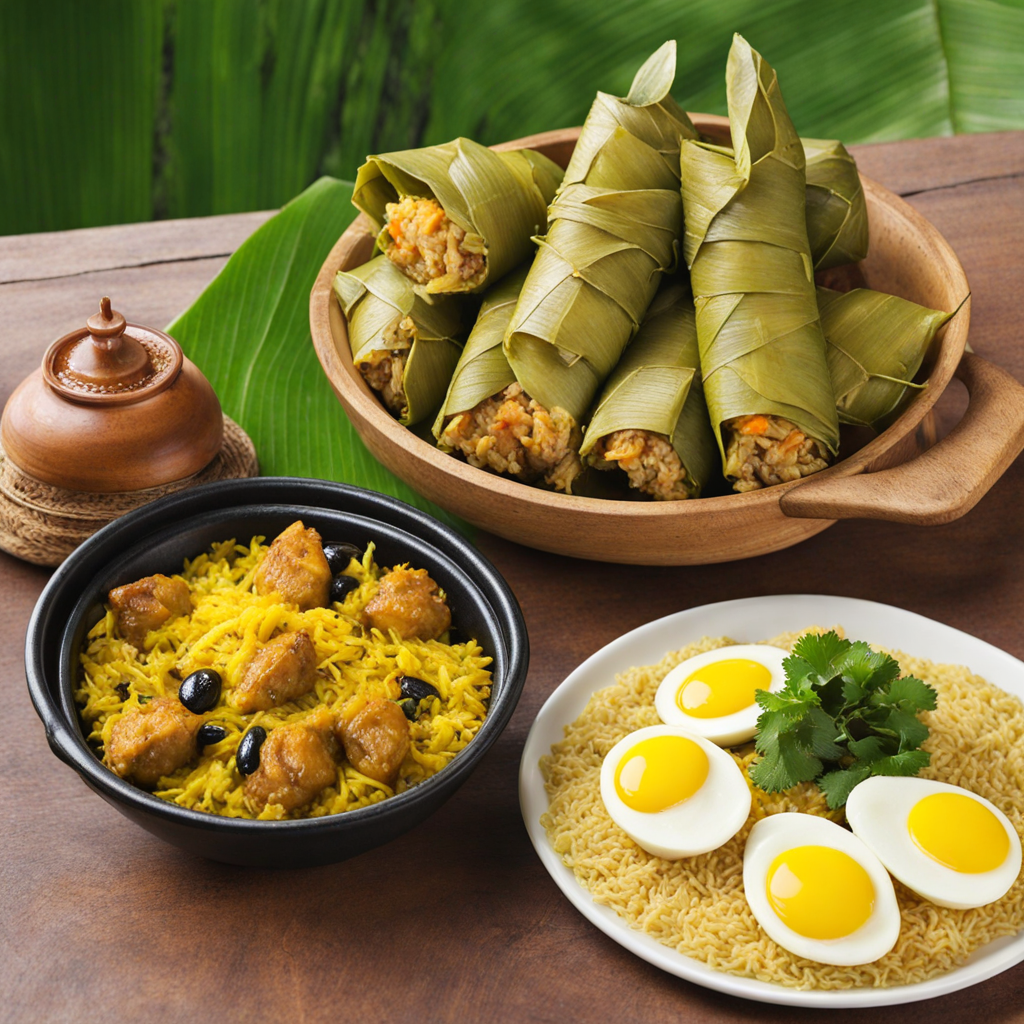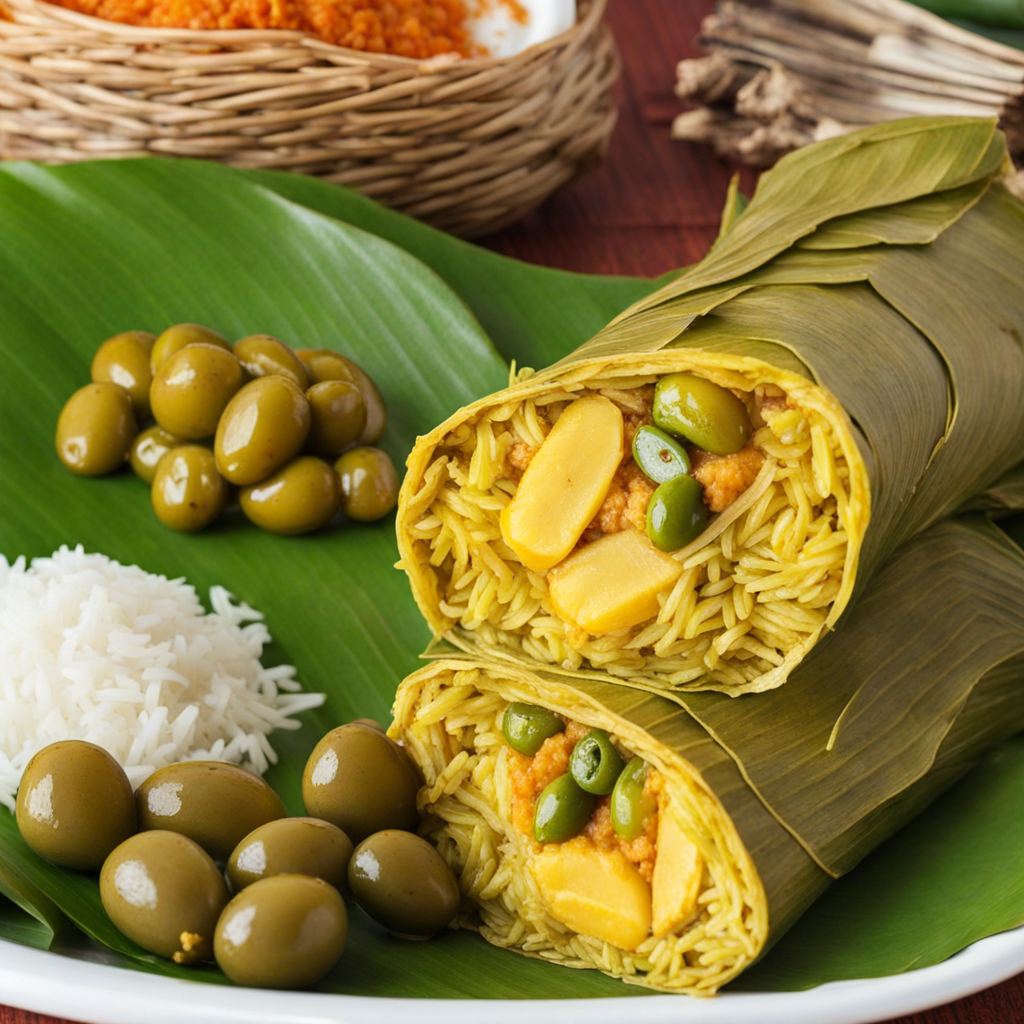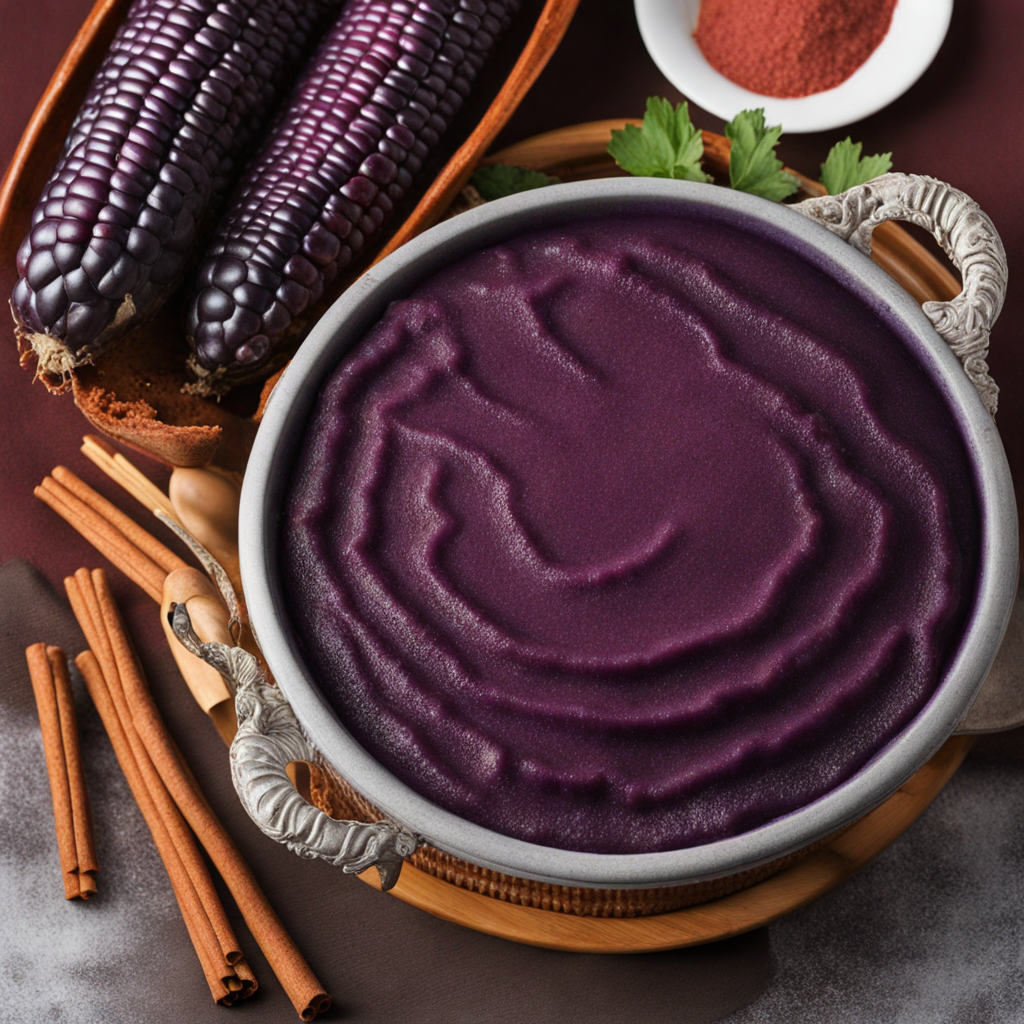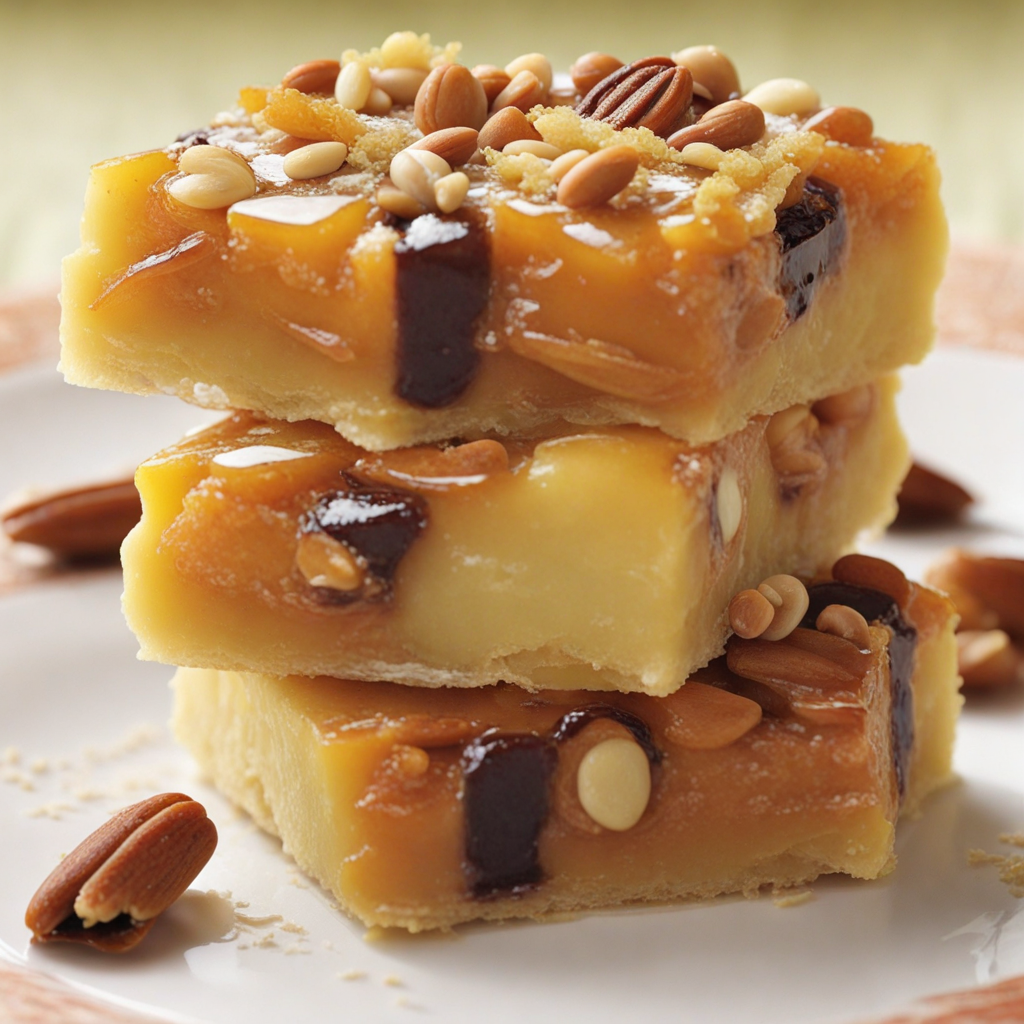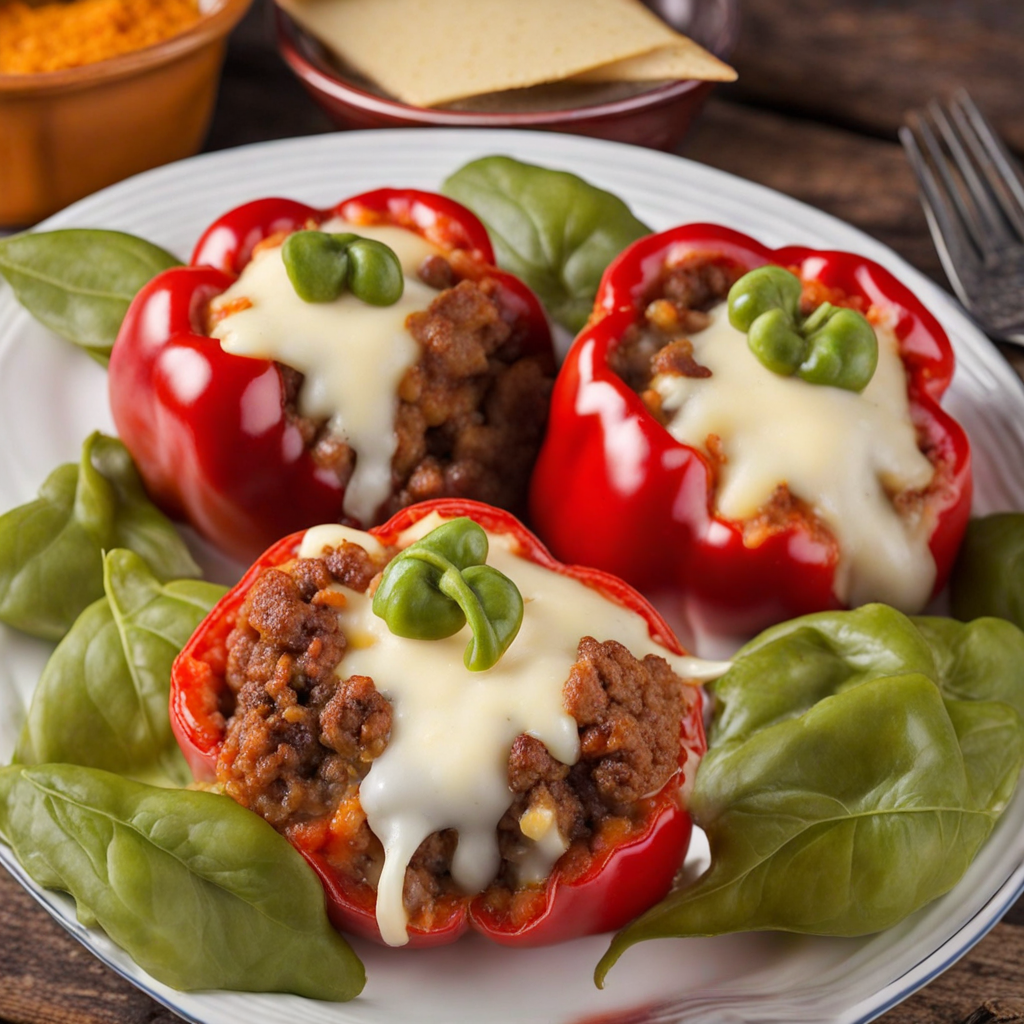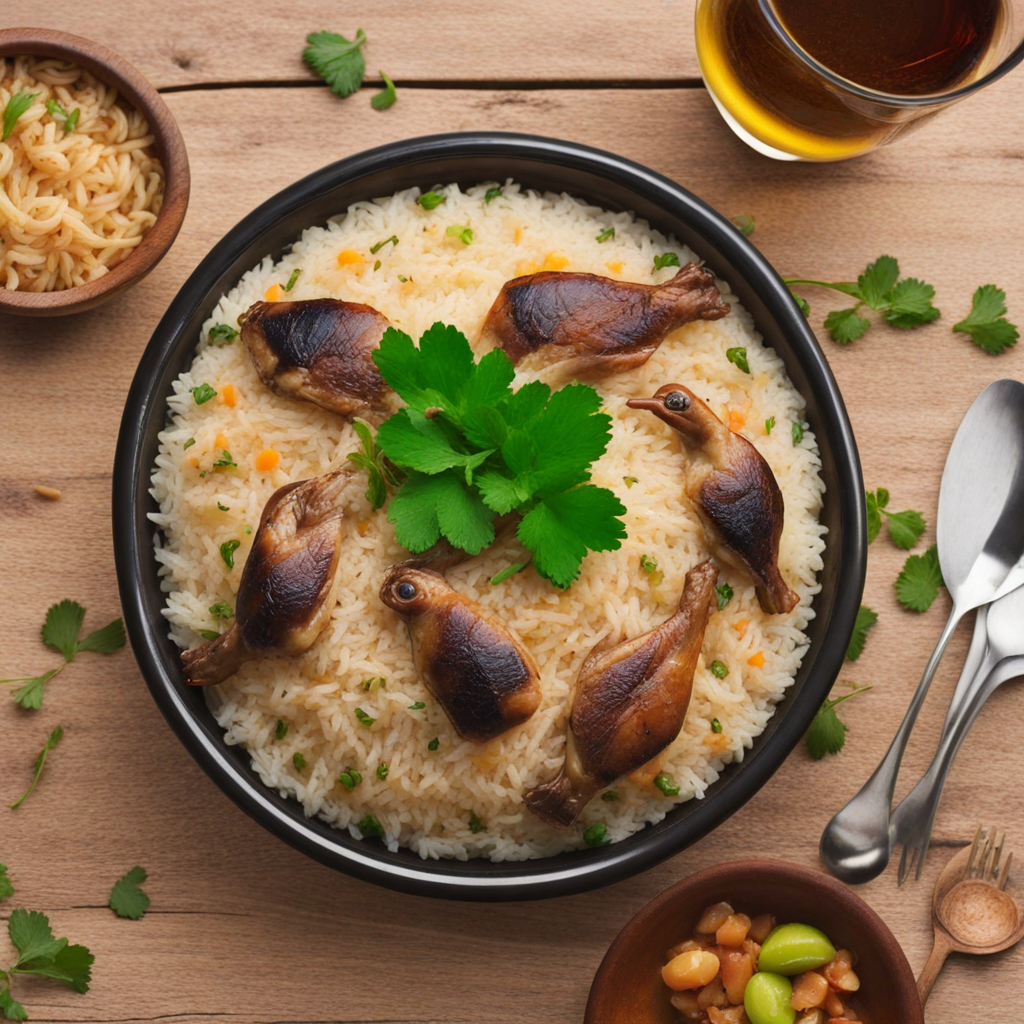Juane
Juane is a traditional Peruvian dish that originates from the Amazon region, particularly associated with the indigenous culture of the area. This flavorful dish is primarily made of rice seasoned with a blend of spices, accompanied by chicken or other meats, and often includes hard-boiled eggs, olives, and sometimes even plantains. The unique combination of ingredients gives Juane a rich and aromatic flavor profile, making it a delightful culinary experience for those seeking something new and exciting. The dish is typically wrapped in bijao leaves, which not only infuse it with a subtle herbal aroma but also provide a beautiful presentation when unwrapped.
How It Became This Dish
Juane: A Culinary Tradition from Peru #### Origins Juane, a quintessential dish from the Peruvian Amazon, is a delightful blend of flavors and traditions that dates back to pre-Columbian times. Named after Saint John the Baptist (San Juan), the dish is particularly associated with the celebration of the Feast of Saint John, which takes place in mid-June. Juane’s origins are deeply rooted in the indigenous cultures of the Amazon Basin, where the lush landscape provided a bounty of ingredients. Traditionally, Juane was prepared by indigenous peoples using local ingredients, such as rice, chicken, and a variety of spices, all wrapped in bijao leaves (also known as banana leaves). The use of bijao leaves is significant as it reflects the sustainable practices of the native communities, utilizing local flora for cooking and imparting unique flavors to the dish. The dish may have evolved from the ancient practice of cooking food in leaf wrappers, a technique that was common in many indigenous cultures across the Americas. As European colonizers arrived, they introduced new ingredients like rice, which was incorporated into the dish, further enriching its flavor profile. #### Cultural Significance Juane is more than just a meal; it is a symbol of cultural identity and community in the Amazonian region of Peru. The preparation of Juane is often a communal activity, where families and friends come together to cook, share stories, and celebrate their heritage. The Feast of Saint John serves as a focal point for these gatherings, where people honor their traditions while enjoying the delicious flavors of Juane. The dish is often served during important celebrations and festivals, where it is accompanied by various side dishes, such as salsa criolla (a spicy onion and lime salad) and fried plantains. Its vibrant presentation, wrapped in bright green bijao leaves, adds to the festive atmosphere. Juane is not only a staple of everyday life but also a culinary expression of the cultural diversity found in Peru, particularly in the Amazonian region. #### Ingredients and Preparation The main components of Juane include rice, chicken (or sometimes other meats like fish or pork), olives, hard-boiled eggs, and a blend of spices and herbs. The rice is typically seasoned with a mix of turmeric, cumin, and other spices, giving it a distinctive yellow color and aromatic flavor. The process begins with marinating the meat and preparing the rice, which is then mixed with other ingredients like diced olives and boiled eggs. Once the filling is ready, the mixture is placed onto a bijao leaf, which is then folded and tied securely to create a pouch. This method of wrapping not only enhances the flavors through steaming but also makes the dish easy to transport, a practical trait that harkens back to its origins in the nomadic lifestyles of indigenous peoples. Juane is typically cooked by steaming or boiling, which helps retain moisture and infuses the dish with the earthy flavors of the bijao leaves. Once cooked, the Juane is unwrapped, revealing a vibrant, aromatic meal that is both visually appealing and delicious. #### Evolution Over Time As Peru has modernized, the preparation of Juane has evolved. While traditional recipes remain popular, contemporary chefs have begun to experiment with variations, incorporating new ingredients and techniques. This culinary evolution reflects the broader trends in Peruvian cuisine, which has gained international acclaim for its fusion of traditional and modern cooking. In urban areas, Juane has found its way onto restaurant menus, often presented with a twist. Chefs may use different proteins, such as duck or quinoa, to cater to changing tastes and dietary preferences. Some variations even incorporate elements of fusion cuisine, blending traditional Amazonian flavors with influences from other culinary traditions around the world. Moreover, the rise of culinary tourism in Peru has brought attention to Juane, with travelers eager to experience authentic Peruvian dishes. Cooking classes and food tours in the Amazon region frequently feature Juane, allowing visitors to engage with local culture while learning about the history and significance of the dish. #### Juane in Contemporary Culture In contemporary Peru, Juane continues to hold a special place in the hearts of its people. The dish is often prepared during family gatherings and celebrations, serving as a reminder of cultural heritage and communal bonds. It is not uncommon to find Juane being served at weddings, birthdays, and other significant life events, highlighting its role as a celebratory dish. Moreover, the resurgence of interest in traditional Peruvian cuisine has prompted a renewed appreciation for Juane among younger generations. As more people seek to connect with their roots and heritage, the preparation and consumption of Juane have become a means of cultural expression and identity. Community events and festivals often showcase Juane as a highlight, bringing together people of all ages to enjoy this traditional dish. #### Conclusion Juane is more than just a dish; it is a reflection of Peru’s rich cultural history, blending indigenous traditions with modern influences. Its roots in the Amazonian region and its association with the Feast of Saint John underscore the importance of community, family, and cultural identity. As it continues to evolve and adapt to contemporary tastes, Juane remains a beloved emblem of Peruvian culinary heritage, cherished by locals and celebrated by visitors alike. Through the lens of Juane, one can appreciate the complexity and richness of Peruvian cuisine, where history, culture, and flavor intertwine to create a unique dining experience. Whether enjoyed at a festive gathering or a quiet family meal, Juane stands as a testament to the enduring legacy of Peru’s culinary traditions, inviting all to savor its delightful flavors and rich cultural significance.
You may like
Discover local flavors from Peru


